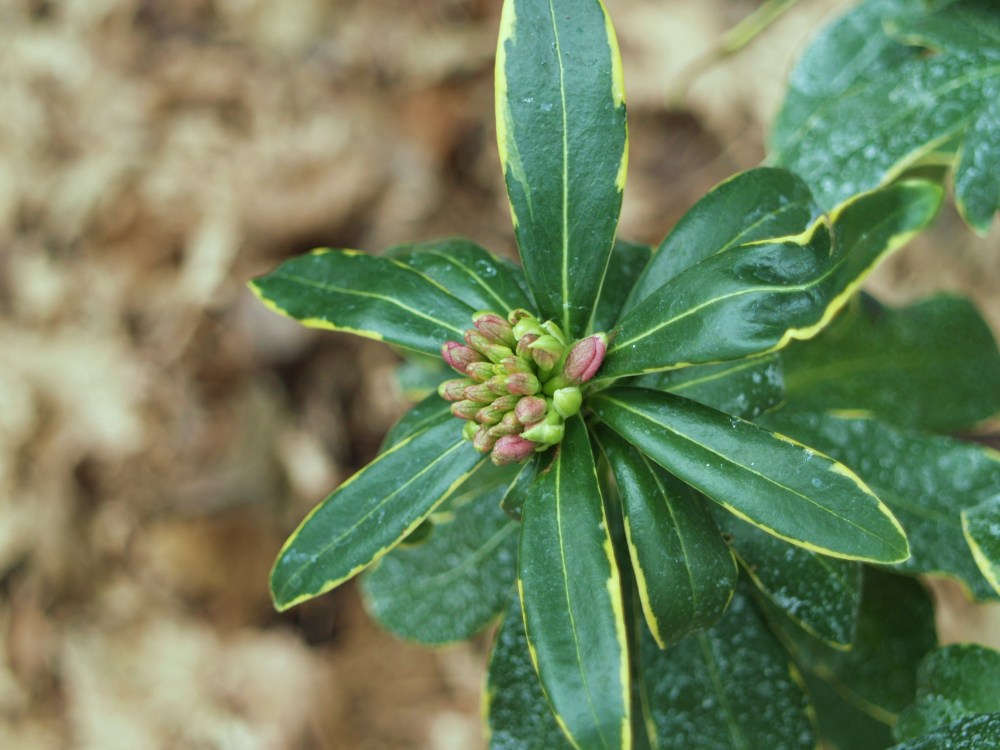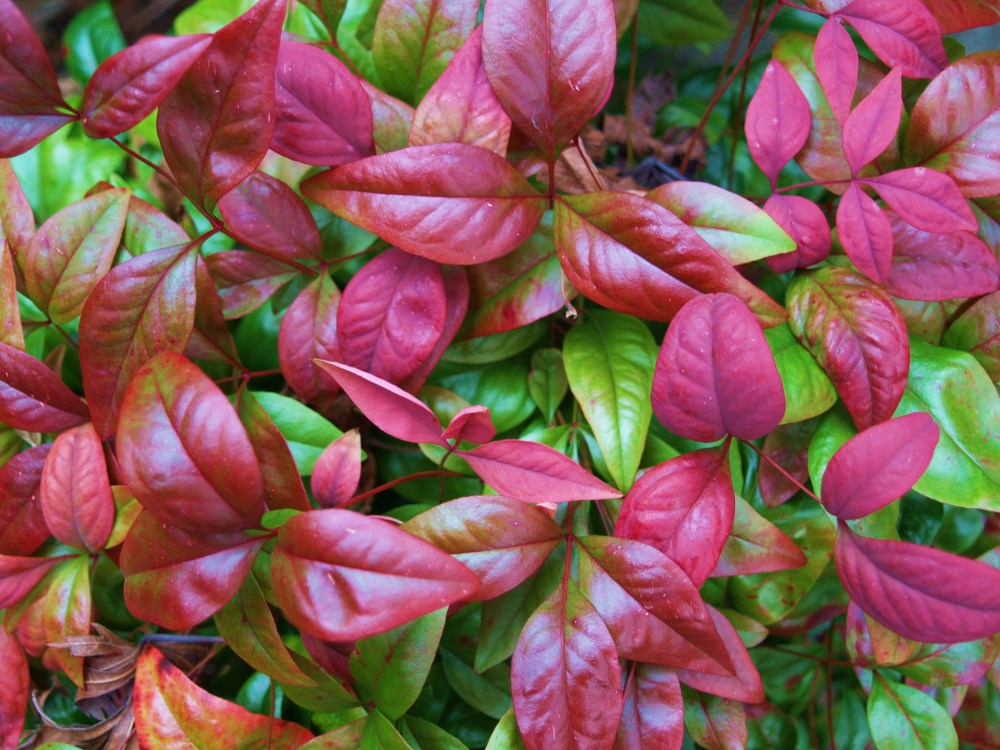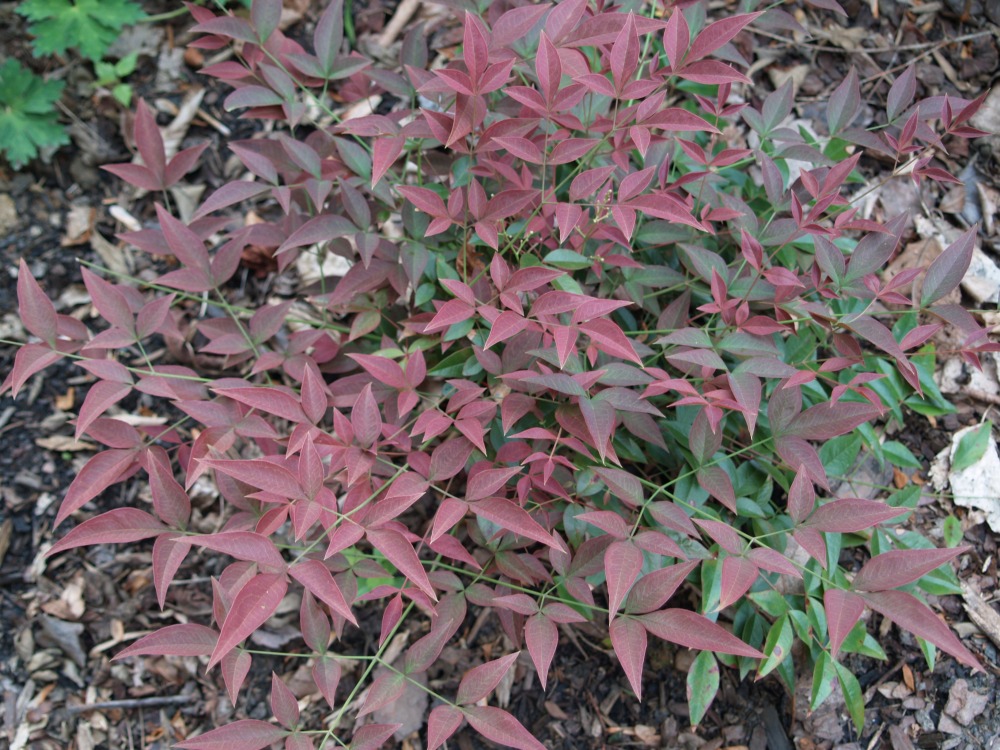The late autumn blooming camellias appear to be finished for the season, except for ‘Winter’s Interlude’ that has dozens of fat buds, but hasn’t flowered in any of the past several years. I am probably imagining that the buds are showing a hint of color, as if ready to open on the next warm afternoon, but after repeated failures I’m not expecting a different result this year.
‘Winter Sun’ mahonia is slightly past peak bloom now, and I expect that it will fade by the first week of January. A handful are planted in part shade and sunny spots, and the ones in the sun flower earlier, and fade more quickly.
With moderate temperatures in January the vernal witch hazel (Hamamelis vernalis) will flower several weeks earlier than the hybrids ‘Arnold’s Promise’ and ‘Diane’. And, today there are a few scattered yellow blooms on the winter jasmines (Jasminum nudiflorum), and a bit of pink is already peaking out from the buds of the evergreen variegated winter daphnes (Daphne odora ‘Aureo-marginata’, above). Otherwise, there are slim prospects for blooms over the next six weeks (though these will be greatly anticipated). Instead, this is the time to savor foliage of evergreens less appreciated through the warmer months.
Nandina domestica is treasured through the winter for its large clusters of red berries, and the foliage of some plants (and not others) will turn to red in late autumn. But, by mid January many of the nandinas begin to shed their leaves, and in the typical cold of northwestern Virginia they are often nearly bare in late winter. Other nandinas dependably hold their foliage through the winter, and two recent introductions are brilliantly colored. ‘Blush Pink’ (Nandina domestica ‘Blush Pink’, above) does not have berries in winter, but its foliage is a splendid medley of dark and light pinks against a backdrop of green.
‘Blush Pink’ is a considerable improvement over the common ‘Firepower’ nandina. ‘Firepower’ lacks vigor and performs unremarkably in my garden with only the promise of red autumn foliage that is often disappointing. ‘Blush Pink’ is a considerable improvement with superior growth and colored foliage through the year. 
‘Flirt’ nandina (Nandina domestica ‘Flirt’, above) is a low spreader similar to ‘Harbor Dwarf’, except that the foliage retains a deep red color throughout the year. I’ve never been overly impressed with the growth of ‘Harbor Dwarf’ (or the improved ‘Harbor Belle’), but in the few years since I planted a few test plants ‘Flirt’ has grown with acceptable vigor.
Due to marginal cold hardiness loropetalums are found in mid Atlantic garden centers infrequently, but I am just about to the point of declaring that the hardiest of the bunch are acceptable for spring planting. One green leafed and several purple leafed cultivars (Loropetalum chinensis ‘Purple Diamond’, above) have survived three and four winters in my garden without damage, though the purple leafed types refuse to flower (and none flower in the spring). I hold out hope that the flower buds will survive as the plants become more established, but the arching branches and purple foliage are quite nice.
Before I am tempted to ramble on too long I’ll close for the day with the variegated leaf drooping leucothoe (Leucothoe fontanesiana ‘Rainbow’, above). I’ve never been wildly enthusiastic about the growth or foliage (or even the blooms) of ‘Rainbow’, but the leaf buds are wonderful.
In a few days I’ll return with plants with yellow foliage, and with a few of the variegated leaves that stand out in the winter garden. I will admit to strolling the garden with less frequency in the winter months, but still there many marvelous plants to enjoy.
Hi Dave,
I have Loropetalum all around my home and this year 5 have flowers all over them now when usually they do not bloom until late February or March (if I am remembering right?). I think because it has been unusually warm until the last three of 4 days.
I am hoping that this unusually warm weather does not mess up my weeping redbud that I am still watching and the new smoke tree… It truly has been warm until now and no telling how long this sudden cold snap will last… Rainy, windy, and cold today…
Hope that your holidays are memorable!
In most parts of the country prolonged warm spells in the winter cause no problems at all. A few blooms will pop out prematurely, but flower buds are usually not damaged when cold temperatures return. The remaining buds bloom on schedule.
Evergreens are most susceptible to cold damage, particularly in southern regions when warm weather persists late into the autumn and plants aren’t dormant when freezing temperatures arrive. Most trees and shrubs require extended periods of warmth before emerging from dormancy, so a week or two of warm days is not a problem.
Thanks Dave that is a good thing to know… Have a great evening!
Hi Dave,
I have a beautiful loropetalum at my house in coastal N.C. It is approximately 6 feet high and 4 feet wide. It blooms almost all the time! Unfortunately, after Hurricane Isabel it drooped almost to the ground and I didn’t find it until about a month ago. It was staked then and when I saw it two weeks ago it looked as if it was coming around to its old self. It is planted in rather sandy soil and generally gets lots of rainfall. It is one of my favorite shrubs and everyone who visits my house comments on it!
Anita
From southeast Virginia and further south loropetalums are tough as nails. A plant that is damaged can be cut back severely and it will rejuvenate quickly. There are so many great recent introductions that I’m hoping the ones in my garden settle in to gain some sturdiness so that they’ll bloom in the spring.